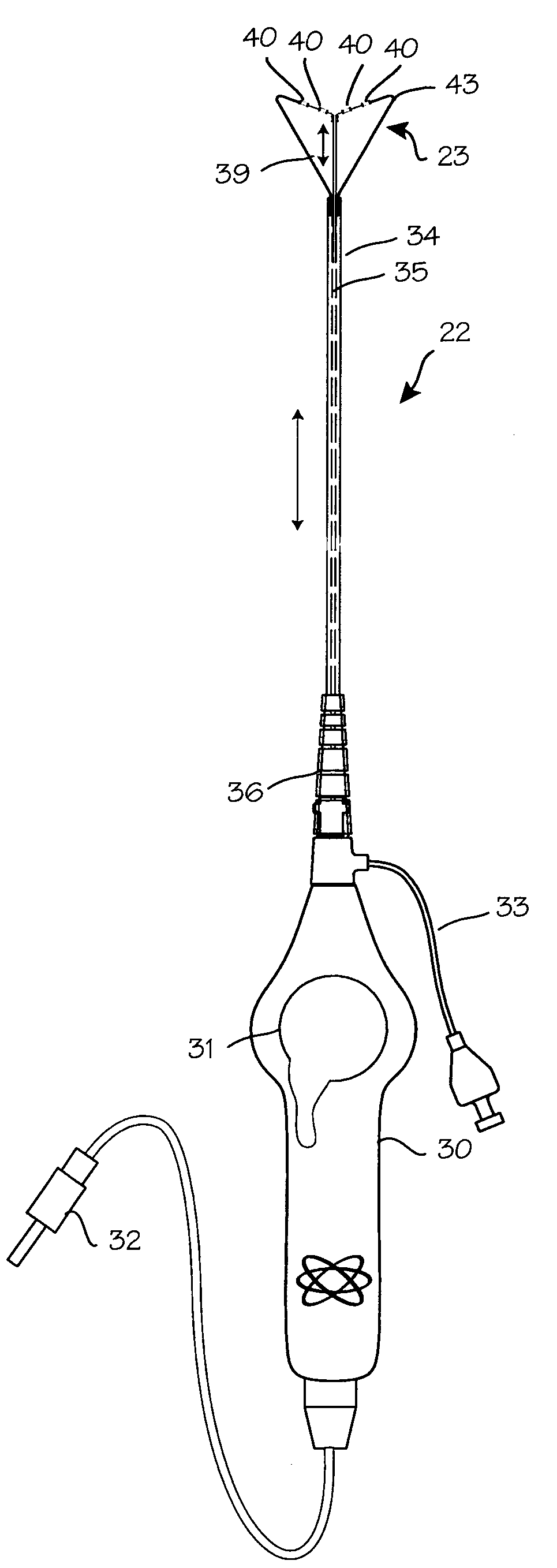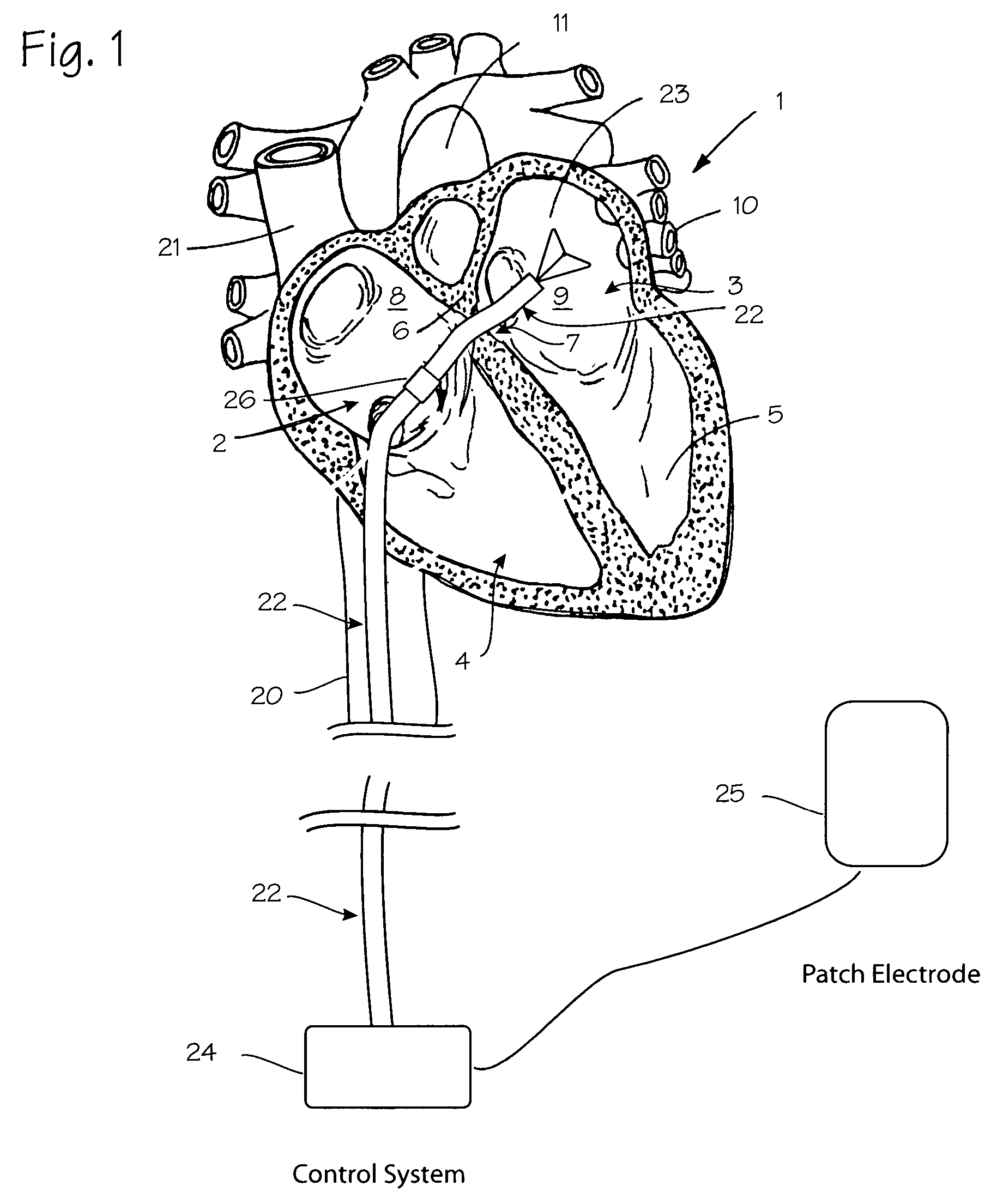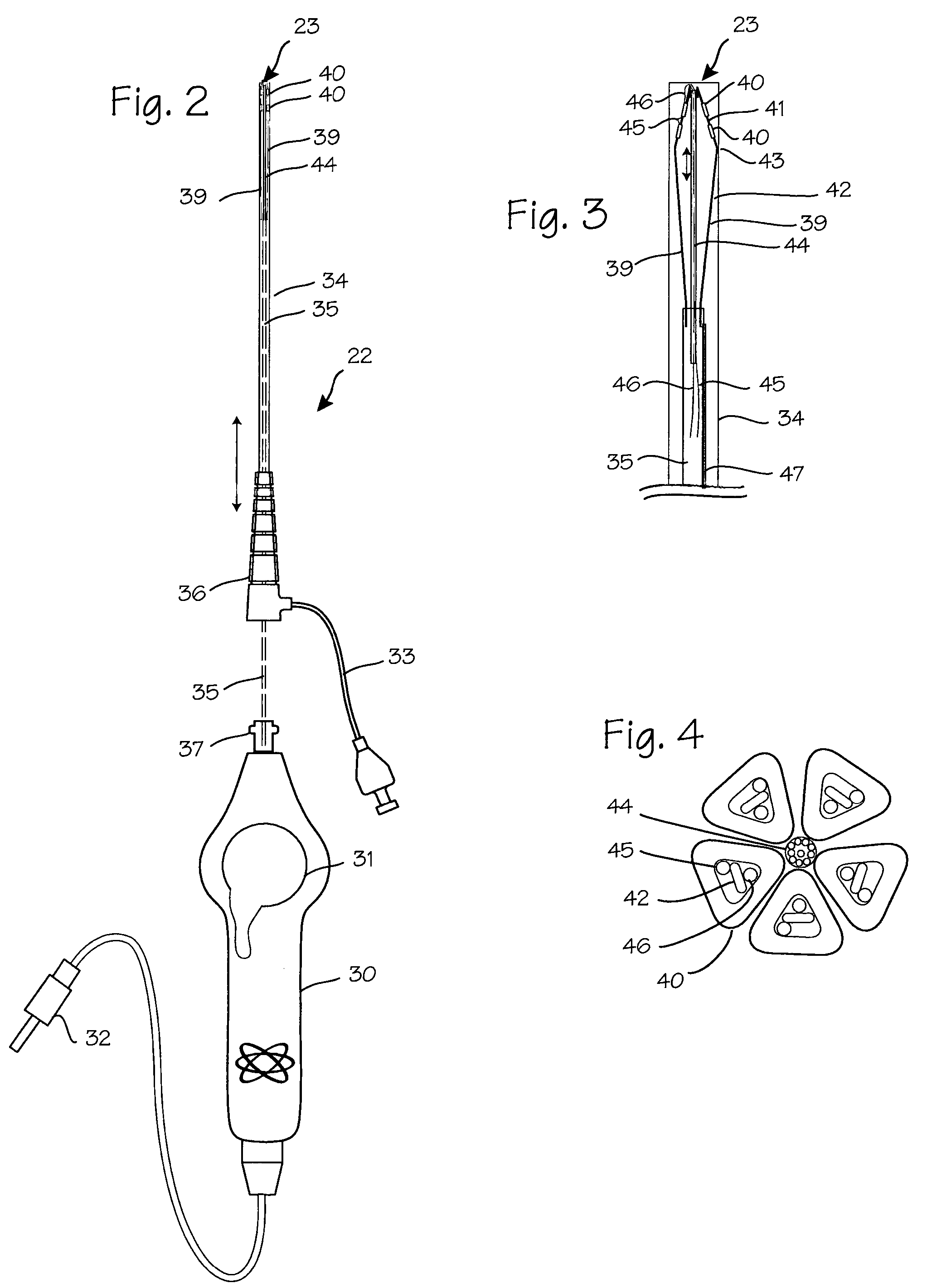Atrial ablation catheter and method of use
a catheter and atrial ablation technology, applied in the field of atrial ablation, can solve the problems of af causing stroke, inability to properly pump out blood, pooling and clots, etc., and achieve the effect of improving efficacy and outcomes, and being easy to deploy and retra
- Summary
- Abstract
- Description
- Claims
- Application Information
AI Technical Summary
Benefits of technology
Problems solved by technology
Method used
Image
Examples
Embodiment Construction
[0018]FIG. 1 illustrates the treatment to be accomplished with the devices and methods described below. FIG. 1 shows a cutaway view of the human heart 1, showing the major structures of the heart including the right atrium 2, the left atrium 3, the right ventricle 4, and the left ventricle 5. The atrial septum 6 separates the left and right atria. The fossa ovalis 7 is a small depression in the atrial septum which is easily punctured and easily heals, and may be used as an access pathway to the left atrium from the right atrium. In a patient suffering from atrial fibrillation, aberrant electrically conductive tissue may be found in the atrial walls 8 and 9, as well as in the pulmonary veins 10 and pulmonary arteries 11. Ablation of these areas, referred to as arrhythmogenic foci (and also referred to as drivers or rotors), is an effective treatment for atrial fibrillation. Though circumferential ablation of the pulmonary veins cures the arrhythmia which originates in the pulmonary v...
PUM
 Login to View More
Login to View More Abstract
Description
Claims
Application Information
 Login to View More
Login to View More - R&D
- Intellectual Property
- Life Sciences
- Materials
- Tech Scout
- Unparalleled Data Quality
- Higher Quality Content
- 60% Fewer Hallucinations
Browse by: Latest US Patents, China's latest patents, Technical Efficacy Thesaurus, Application Domain, Technology Topic, Popular Technical Reports.
© 2025 PatSnap. All rights reserved.Legal|Privacy policy|Modern Slavery Act Transparency Statement|Sitemap|About US| Contact US: help@patsnap.com



